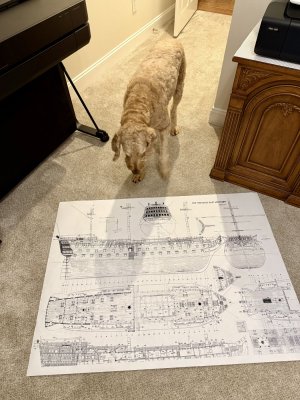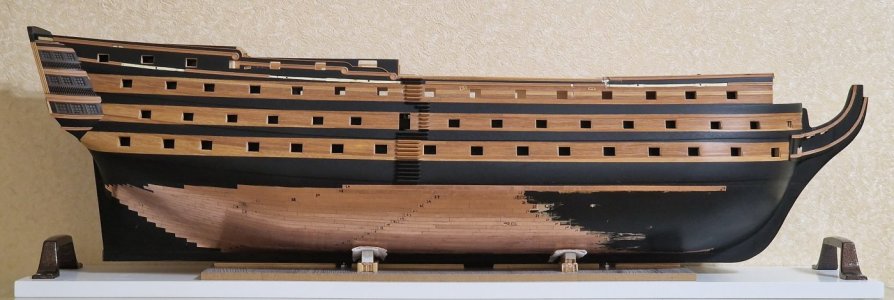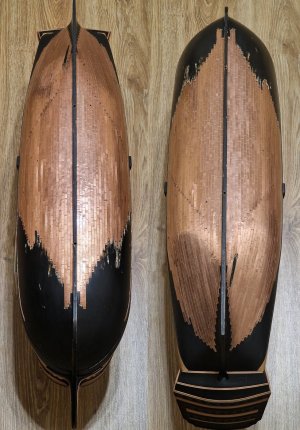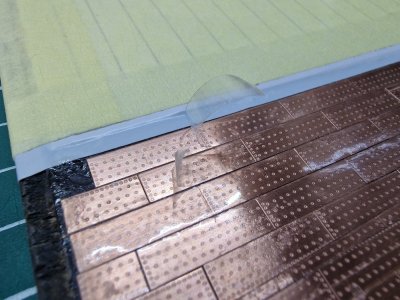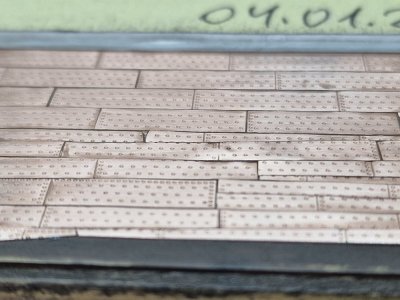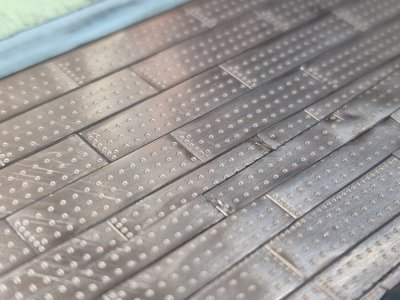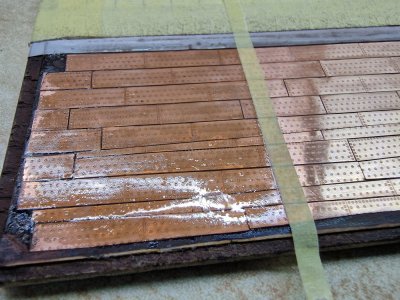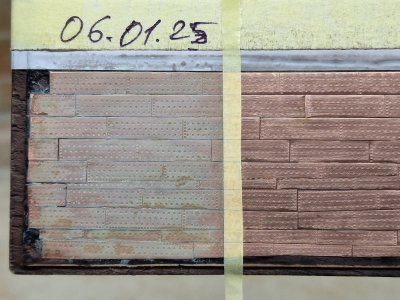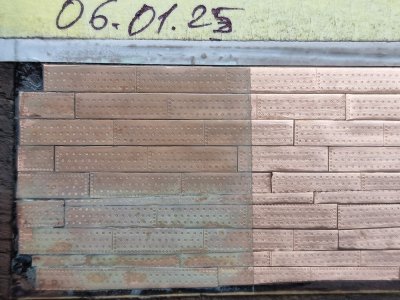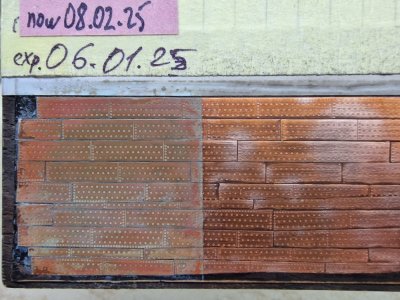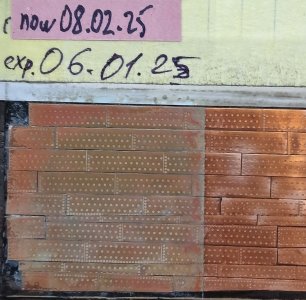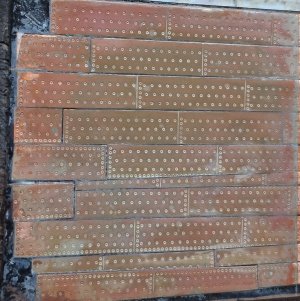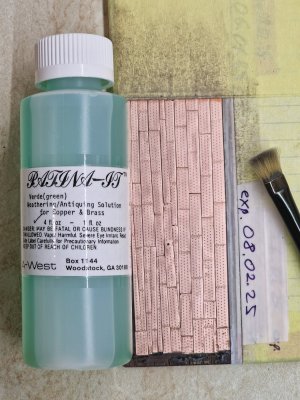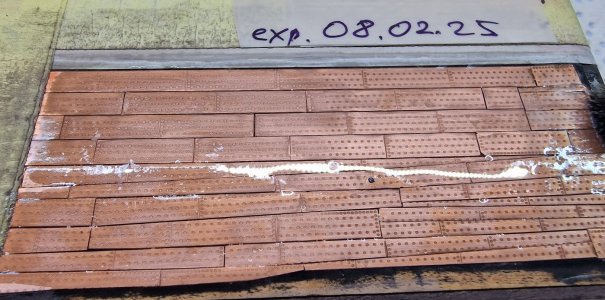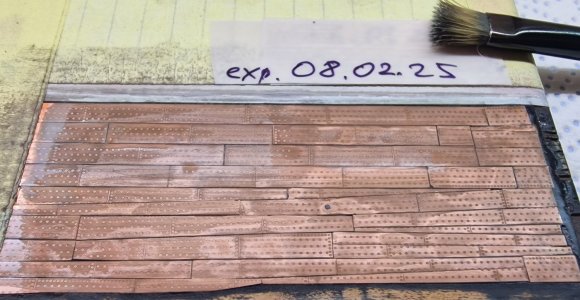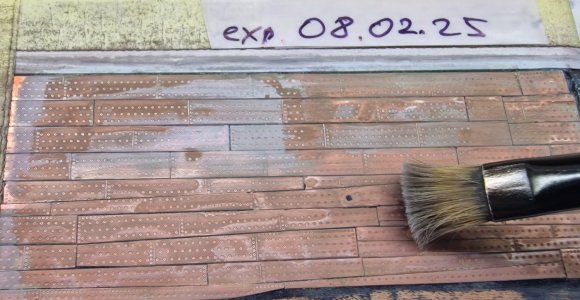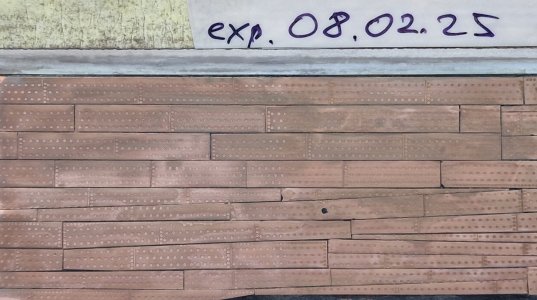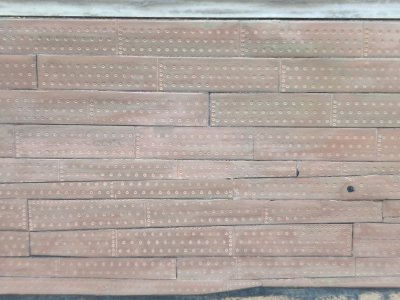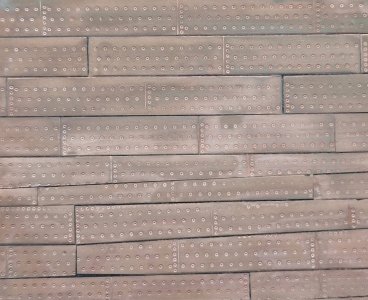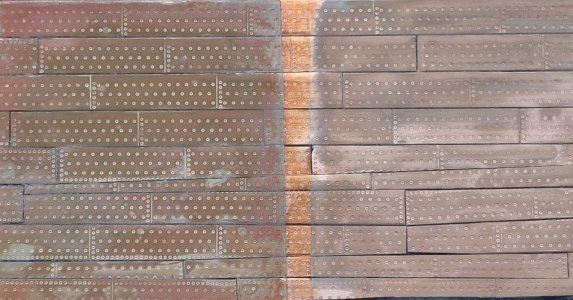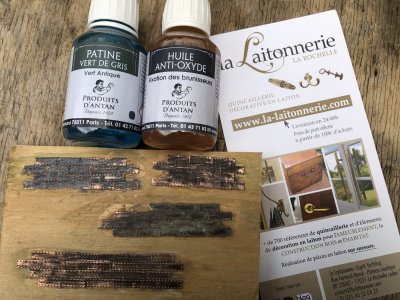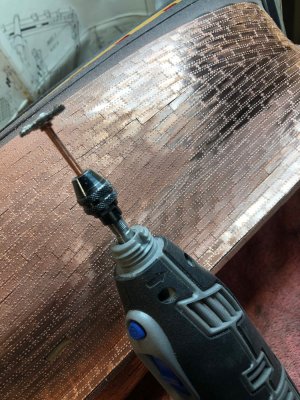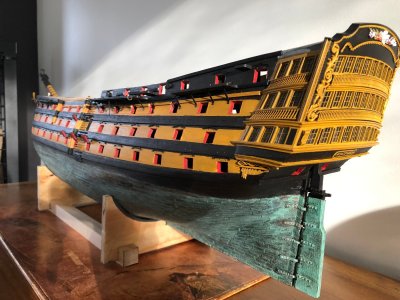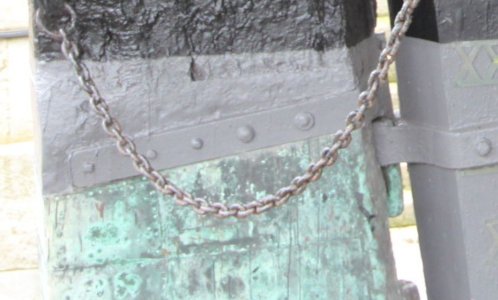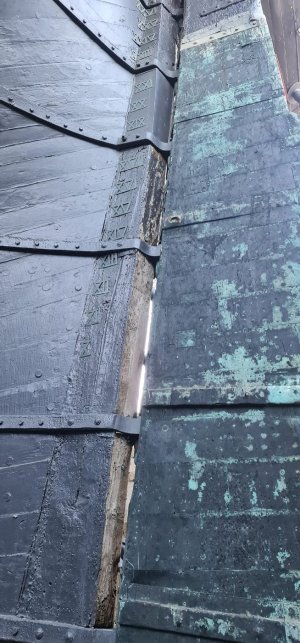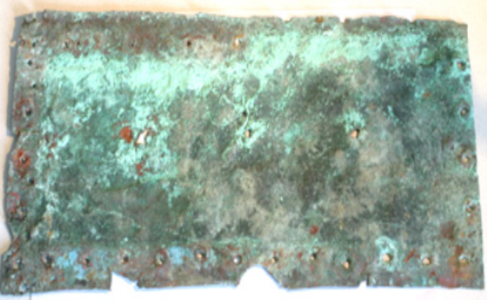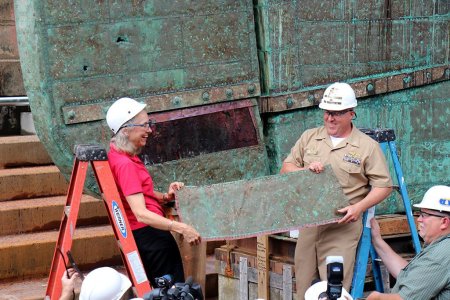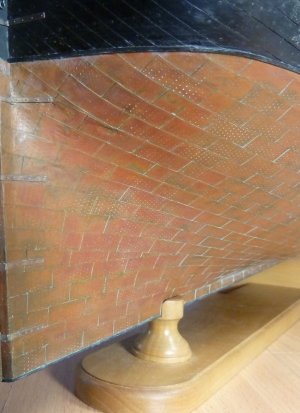I haven't posted anything for a few weeks, I've been busy calculating the rigging for Alert, you can read about it on his thread, but for now I want to share my experiments with copper sheathing.
I waited for the results for a whole month and didn't really do any sheathing. And now I can share what I got.
So, I figured out why, I had a problem with the result, although I did everything correctly according to Shevelev's method. It turned out that I used a special copper cleaner before applying the patina. I don't know what its fault is, but after I applied the patina to a clean polished copper (wiped with alcohol), the result became completely different. Let's go in order.
View attachment 500194
I made a sample from the same copper blank as on the ship, glued it in the same way and removed the protective tape before polishing.
At this stage, I already realized that there would be problems in those places where the sandpaper did not reach well. Glue could remain in these places and prevent the patina from laying down normally, so such places had to be rubbed very carefully, which took a very long time.
View attachment 500195
First I processed it with 400 grit sandpaper, then with 1000 grit.
View attachment 500196
I applied the patina (I'll tell you about it below) with a paper towel, but I realized that this is not the best option (below I'll tell you what is the best way to apply it and how).
View attachment 500197
And after drying, the surface turned a little green.
View attachment 500198
After that I removed the surface patina with a dry brush like dust. I left a little for an experiment to see what would happen with such a surface.
View attachment 500199
The disadvantage was that the surface dried unevenly, and therefore the patina was applied differently, in patches. And that's not the worst thing, some spots were shiny at some angles, and that's not very good.
And here's the result a month after application (by the way, I later erased the green patina everywhere).
View attachment 500200
Notice how unevenly the copper itself has oxidized (on the right).
View attachment 500201
View attachment 500202
It is very clear that the oxidation occurred differently. In the center it is closer to brown, and along the perimeter - to red. There are greenish areas, and in general I like the result. Yes, it is not ideal, but already almost as I want. Therefore, today I repeated everything again, with minor changes. So:
View attachment 500203
I sanded the copper again with 400 and 1000 grit sandpaper (I covered up the previous result). I wiped the surface with alcohol and after drying, I immediately applied Patina-it. I wrote about this product earlier, Dmitry Shevelev uses it and I have been looking for it for many years (but it was discontinued and I accidentally bought it in the USA from an antique dealer).
I applied Patina-it with a brush generously, so that there was a lot of liquid on the surface evenly.
View attachment 500204
Then I wait a few seconds (10-20) so that the surface does not have time to dry out and with the same brush I wipe the surface, as if collecting excess moisture, wiping the brush with a napkin from time to time. This is necessary so that the surface dries as evenly and simultaneously as possible, otherwise there will be spotting. The result is like this.
View attachment 500205
Then we wait until the surface is completely dry and after that I brush off the oxide like dust.
View attachment 500206
In some places it is easy to do, in others it requires effort. In the end, this is the result.
View attachment 500207
View attachment 500208
View attachment 500209
The color changes within a week, and after a month here is the difference: on the right - immediately after drying, on the left - after a month.
View attachment 500210
But this time I waited less before rubbing, and accordingly the color saturation may be different, but the spottiness will also be minimal. In a month I will show the difference and the final result. Also, based on Shevelev's practice, I can say for sure that the color becomes even different in a year. More reddish, just the way I want... so let's hope for such a result.

